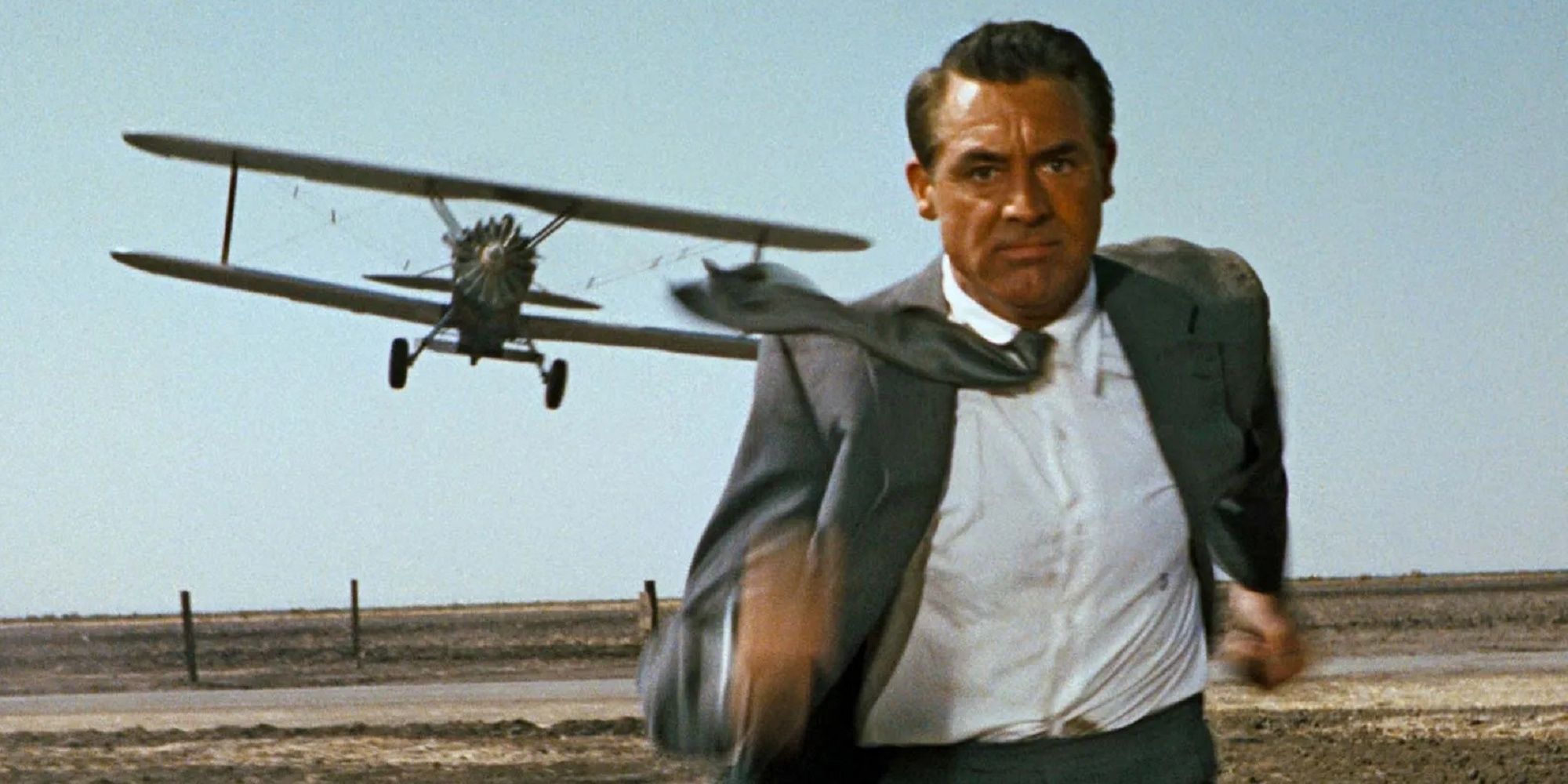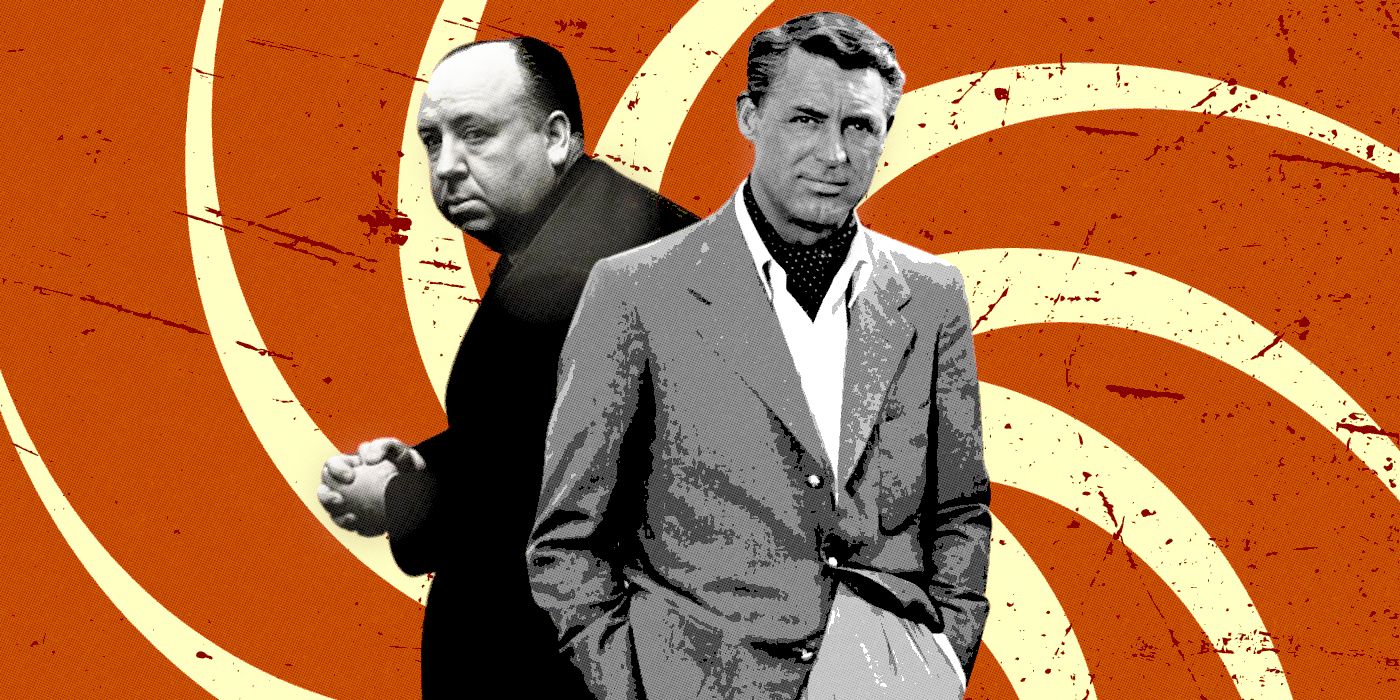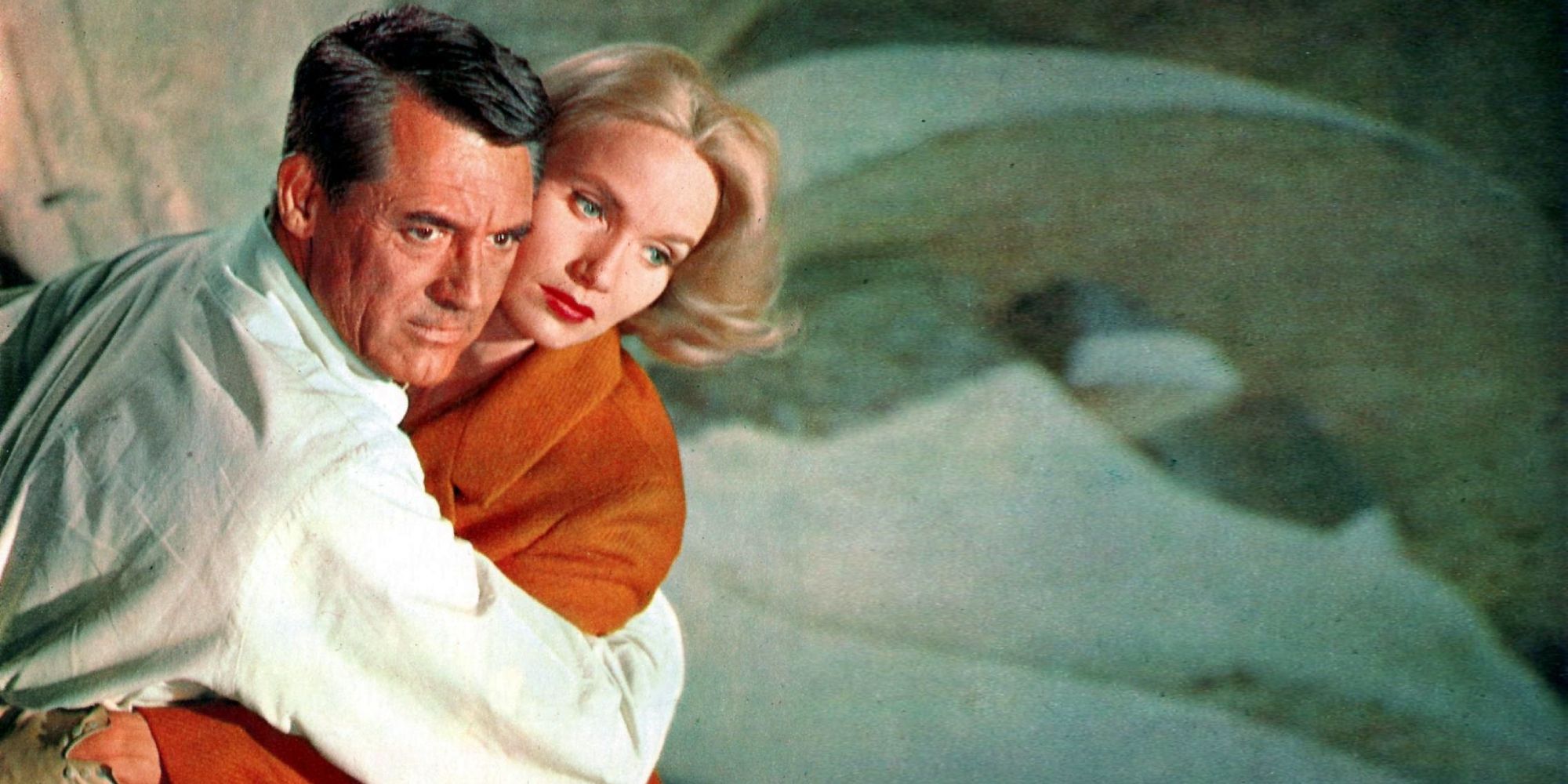The Big Picture
- Alfred Hitchcock's original idea for a tornado scene in North by Northwest was swapped for a more intense plane chase sequence.
- The crop duster pursuit subverted Hitchcock's traditional suspense style, creating a more thrilling and memorable moment.
- Still, the tension and pacing of the plane chase showcases Hitchcock's brilliant technique for technically profound and entertaining scenes.
It’s one of those images used in every “best movie moments” montage (and parodied by Family Guy): a snappily-dressed Cary Grant sprinting across an open field, pursued by a bullet-firing crop duster plane. Frequently cited as one of the greatest films ever made, preserved by the Library of Congress, and a box office smash, North by Northwest is Alfred Hitchcock at his peak, a work of superb entertainment informed by Hitchcock's distinct sensibilities without being weighed down by them. Grant, a frequent Hitchcock collaborator, leads the self-aware caper as Roger Thornhill, the world's most dapper advertising executive this side of Mad Men. A case of mistaken identity sends Thornhill racing to clear his name. Those circumstances lead to the plane chase. As it stands, Hitchcock's original idea for the sequence wouldn't have been nearly as exemplary. Instead, it sounds better suited to a mid-budget 1990s popcorn flick.
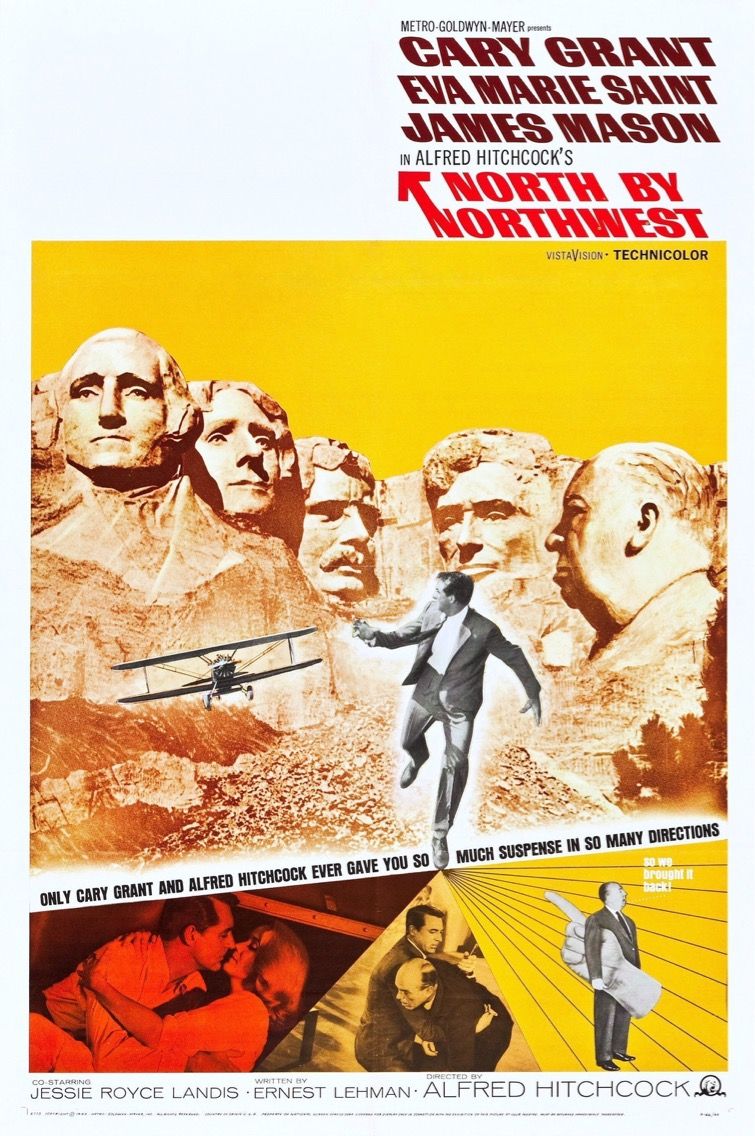
North By Northwest
A New York City advertising executive goes on the run after being mistaken for a government agent by a group of foreign spies, and falls for a woman whose loyalties he begins to doubt.
What Was Alfred Hitchcock’s Original Plan for ‘North by Northwest’?
According to Ernest Lehman's introduction to the published North by Northwest screenplay, Alfred Hitchcock's initial plans involved a very Midwestern weather event. "Our hero is standing all alone in a wide open space and there's nobody and nothing else in sight for 360 degrees around," Lehman writes, "as far as the eye can see...and then along comes a tornado. No place to run!” With those logistics being difficult to film, let alone narratively sound (a villain that can control the weather? He’s an X-Man!), Hitchcock and the production crew kept the concept but switched it to something more believable.
Running from a tornado with nowhere to hide would make for an impressive visual and indeed be terrifying (speaking from semi-tangential experience). Still, the scenario lacks meaning beyond fulfilling the requirements of a set piece. The plane pursuing Thornhill is clearly a planned assassination attempt. If the villain, Phillip Vandamm (James Mason), is making this kind of effort, that's a sign of how much danger the protagonist truly faces. The strategy demonstrates Vandamm's power, too, if his last name wasn't enough to convince. And really, who expects a plan to fly straight up their nose? Certainly not Roger Thornhill, and not the audience, despite knowing full well how many tricks Alfred Hitchcock has hidden up his blazer sleeves.
‘North by Northwest’s Plane Chase Subverts Hitchcock’s Style
Relying upon a humble crop duster forces the Master of Suspense to stretch outside his comfort zone. He can deploy his usual strategies, and he does, but not before flipping them on their ears. Hitchcock's tense moments nominally play out between individuals. A person is in peril, another person poses the threat. Trains, cars, and bombs make appearances to spice things up. Simpler is best, whereas North by Northwest's chase scene isn't by any means a typical pursuit for the era. (Unless you're James Bond, but he'd be the one flying.) This approach was Hitchcock's goal, according to TCM: "Hitchcock described his intention to create a scene that would derive suspense by using the opposite of standard espionage dramas where the hero is placed in jeopardy on a dark city street full of potential danger behind every corner." These touches ensure that another wronged man on the run storyline feels invigorating instead of played out.
Unsurprisingly, Hitchcock pulls off this adjustment with flying colors. The scene drips with his honed, trademark expertise, and it's effectively built from the ground up. One man, alone on a flat stretch of rural road, reduced to literally running for his life. There's no place for Thornhill to hide against a plane firing bullets, no way to fight back, and no situational advantages. The scene's production escalates perfectly; also not a surprise, given that's where the Hitchcock touch always shines. The unsettling thrum of the plane engine sneaks in like an afterthought during a conversation between Thornhill and a man waiting for a bus ride. "That's funny," the man remarks, mildly intrigued. "That plane's dusting crops where there ain't no crops."
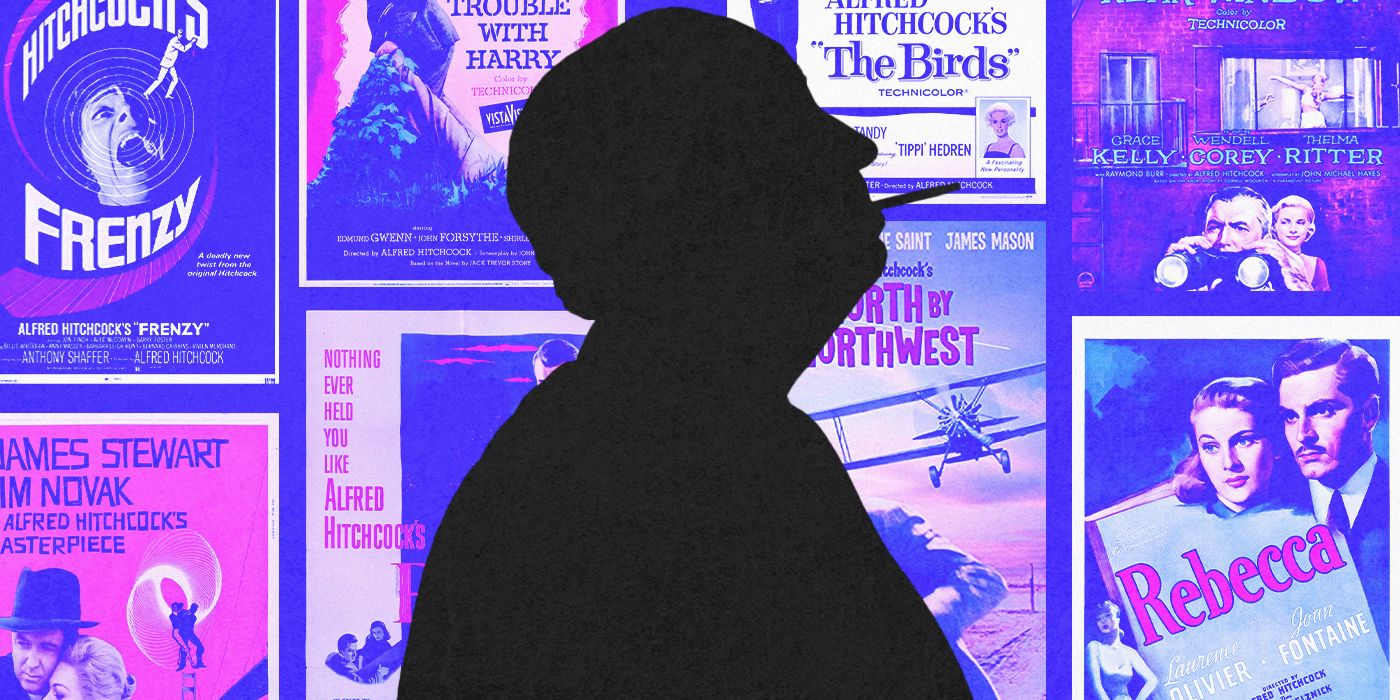
Alfred Hitchcock Didn’t Like His Only Best Picture Winner
Hitchcock did not dream of Manderley.The dialogue is a warning. Something's wrong, but Thornhill can't discern what. The bus drives away. Thornhill shakes his head, checks his watch, and plants his hands on his hips, impatient for the meeting Eve Kendall (Eva Marie Saint) promised. He squints into the distance and watches the plane approach because, frankly, he has nothing else to do in this expanse of gray highway and de-saturated yellow grass. A crop duster can only fly so fast, which presents a prime opportunity for measured pacing. It zooms closer, lower. The engine volume increases, emphasized by the lack of music. Thornhill's expression shifts from disinterest to silent, flabbergasted realization. Finally, the plane flies straight at the camera, accompanied by the engine throttling like dynamite. Thornhill drops to the ground to avoid a grisly death.
The Plane Chase in ‘North by Northwest’ Is Alfred Hitchcock at His Best
The time it takes the plane to circle back heightens tension more than a constant barrage of bullets would. Thornhill has enough time in-between loops to try evasion tactics: failing to wave down a passing car, dashing his butt off, and crouching in a nearby corn field. The latter allows for a brief reprieve, maybe even victory. Then the plane dumps a load of crop dust on Thornhill, driving him out of the field's cover. Thanks to repetition, Thornhill and the audience know he has only a few seconds to convince an incoming truck to stop. It's his only shot at survival. He plants himself in the road. The honking truck driven by a very crabby driver nearly runs him over as the brakes squeal to a stop. The plane then crashes nose-first into the truck, setting it on explosive fire. The pilot might be dead, but Thornhill is back at square one, his escape attempt down the drain (and his snazzy suit needs dry cleaning).
Once Alfred Hitchcock settled on the crop duster over a magically engineered tornado, production limitations forced him to adjust other concepts. Hitchcock envisioned "helicopter footage of the crop duster attack." Not only would it look impressive, the angle would reveal the pilot to be one of Vandamm's agents. Ultimately, those elements aren't necessary. The budget restrictions keep the scene within Thornhill's limited perspective, which is more empathetic, mysterious, and overwhelming. North by Northwest's plane sequence remains sublime because it's plausible within the story — unlike a tornado, as pre-Twister fun as that would be. In another dimension, maybe Cary Grant is watching a cow fly past his windshield.
North by Northwest is available to rent on Prime Video in the U.S.

